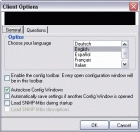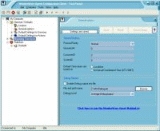| There are certain features of EventReporter those have added an amazing power to it. These include ease of use, full Windows, XP and Vista support, robustness, remote administration, minimal resource usage, full NT event log decoding, and double byte character set support. To learn more about these, please see other miscellaneous features of EventReporter. |





